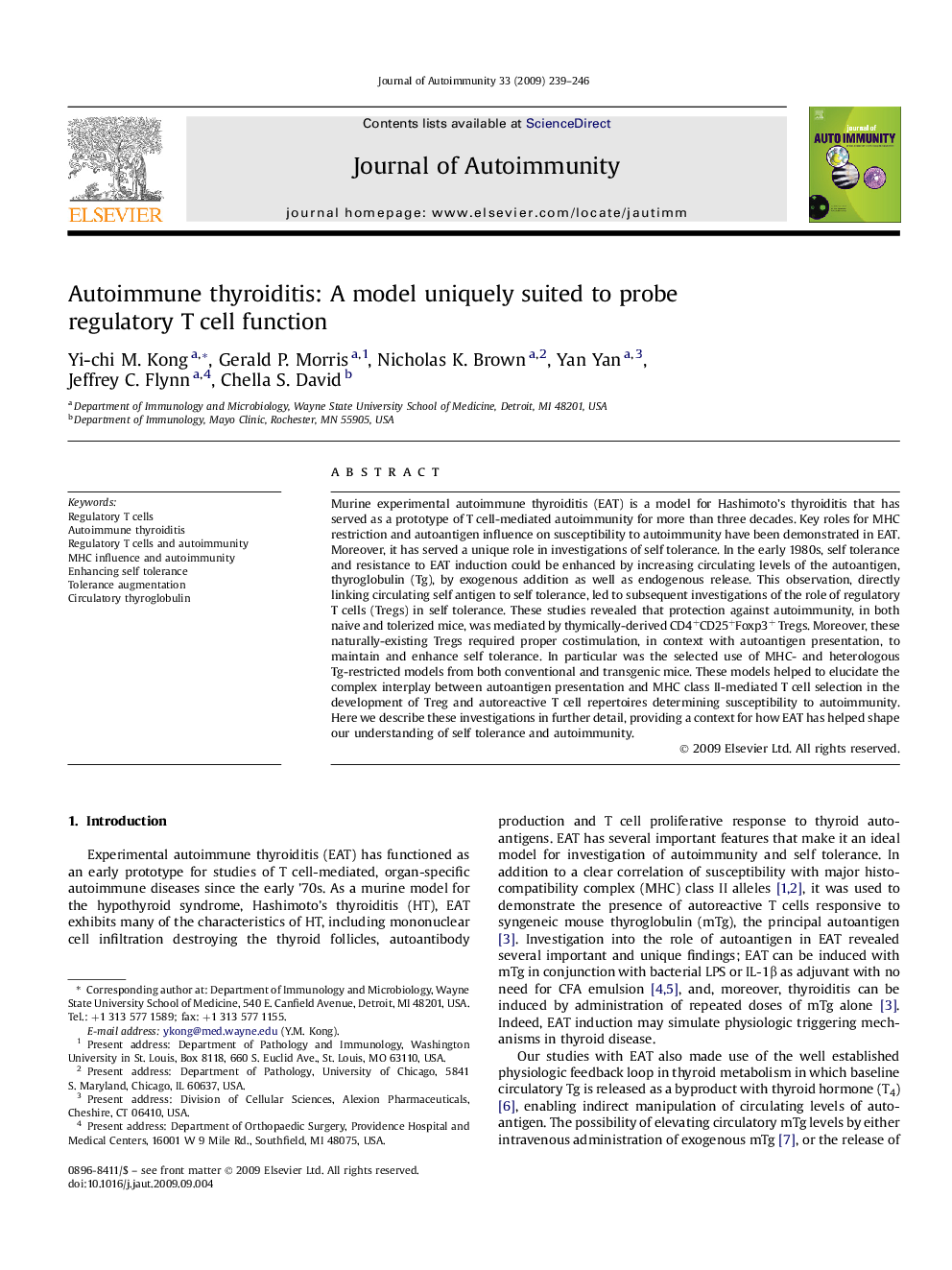| Article ID | Journal | Published Year | Pages | File Type |
|---|---|---|---|---|
| 3368209 | Journal of Autoimmunity | 2009 | 8 Pages |
Murine experimental autoimmune thyroiditis (EAT) is a model for Hashimoto's thyroiditis that has served as a prototype of T cell-mediated autoimmunity for more than three decades. Key roles for MHC restriction and autoantigen influence on susceptibility to autoimmunity have been demonstrated in EAT. Moreover, it has served a unique role in investigations of self tolerance. In the early 1980s, self tolerance and resistance to EAT induction could be enhanced by increasing circulating levels of the autoantigen, thyroglobulin (Tg), by exogenous addition as well as endogenous release. This observation, directly linking circulating self antigen to self tolerance, led to subsequent investigations of the role of regulatory T cells (Tregs) in self tolerance. These studies revealed that protection against autoimmunity, in both naive and tolerized mice, was mediated by thymically-derived CD4+CD25+Foxp3+ Tregs. Moreover, these naturally-existing Tregs required proper costimulation, in context with autoantigen presentation, to maintain and enhance self tolerance. In particular was the selected use of MHC- and heterologous Tg-restricted models from both conventional and transgenic mice. These models helped to elucidate the complex interplay between autoantigen presentation and MHC class II-mediated T cell selection in the development of Treg and autoreactive T cell repertoires determining susceptibility to autoimmunity. Here we describe these investigations in further detail, providing a context for how EAT has helped shape our understanding of self tolerance and autoimmunity.
